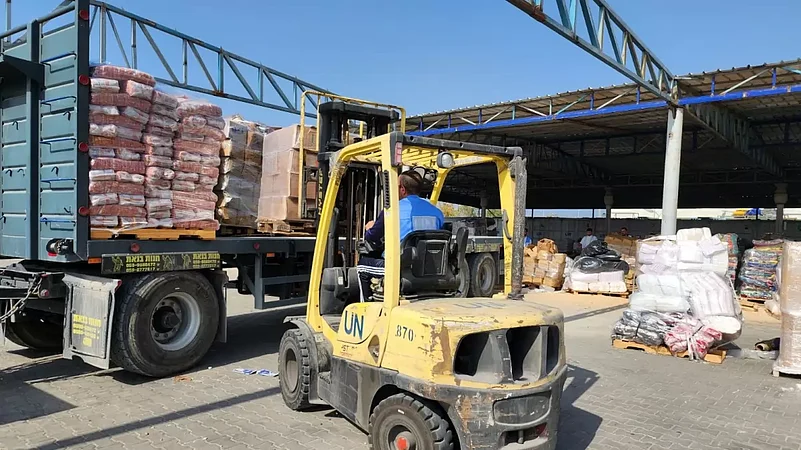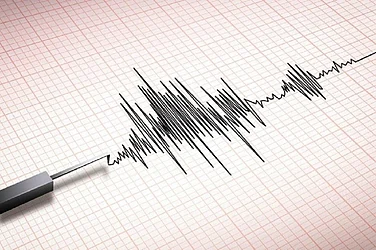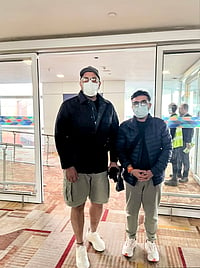The third shipment of humanitarian aid entered Gaza Strip on Monday as the Israel-Hamas War continues on the 17th day on multiple fronts.
Even as Israel has ramped up airstrikes inside Gaza, the United States has pressed for delay in the ground offensive so that negotiations for the release of hostages could go on, according to a report that also said that 50 US-Israeli dual nationals in captivity in Gaza could be released.
While the United Nations (UN) welcomed the third tranche of humanitarian aid to Gaza where hundreds of thousands of Palestinians have been displaced and lack basic amenities, it has pressed for the need to ramp up deliveries and has continued to flag the shortage of fuel that is not included in the supplies delivered so far.
The Israeli military struck Hezbollah sites in Lebanon through Sunday and Monday as rocket attacks into Israel continued. Attacks also continued from Gaza-based Hamas and alerts were sounded in Israeli towns of Ashkelon, Yad Mordechai, Erez, Karmia, and Nativ Ha'Asara.
Since October 7 when Hamas mounted an all-out offensive on Israel in which at least 1,400 were killed, Israel has been carrying out airstrikes in Gaza to take down Hamas leaders and facilities, but widespread civilian casualties have also taken place in these attacks, several hundreds of them being children. The Israeli military conducted 320 strikes in Gaza on the intervening night of Sunday and Monday. Al Jazeera reported on Monday morning that around 400 were killed in Israeli attacks in Gaza in the past 24 hours. The overall death toll has surpassed the 5,000-mark.
3rd shipment of aid enters Gaza Strip, UN calls for more aid
Amid US assurance that the delivery of humanitarian aid to Gaza Strip would continue in a "sustained" manner, the third shipment of aid entered Gaza on Monday from the Rafah crossing at the Egypt-Gaza border.
The Palestinian Red Crescent Society (PRCS) said that 20 trucks of aid entered Gaza on Monday that contained food, medicine, and other supplies.
While the United Nations (UN) welcomed the delivery of aid, it called for greater assistance and pressed for the inclusion of fuel in the deliveries. The World Health Organization (WHO) has previously said that it expects to see around 200 trucks carrying aid entering Gaza every day. That remains a distant idea as only 57 trucks have so far entered Gaza in three days.
In a statement, UN Under-Secretary-General for Humanitarian Affairs and Emergency Relief Coordinator Martin Griffiths earlier said, "Another small glimmer of hope for millions of people in dire need of humanitarian aid. But they need more, much more."
In a press release on Monday, the UN reiterated the shortage of fuel, quoting UN Relief and Works Agency for Palestine Refugees (UNRWA) chief Philippe Lazzarini as saying that without fuel, "there will be no water, no functioning hospitals and bakeries” and that “no fuel will further strangle the children, women and people of Gaza".
Earlier on Sunday, UNRWA had warned that Gaza's fuel reserves could finish in just three more days.
Israel ramps up strikes in Gaza amid anticipation of ground offensive
Israel conducted at least 320 airstrikes in Gaza Strip on the intervening night of Sunday and Monday, according to the military.
The Israeli military on Monday also said it took out militant cells in Lebanon in the past 24 hours. While Hamas has continued to mount attacks on Israel from Gaza, Lebanon-based Hezbollah has opened a second front against Israel on its northern border. Both of these groups are backed by Israel and the ongoing fighting on two fronts have ignited fears that the conflict could escalate into a full-fledged war with the wider Iranian ecosystem in the region.
Attacks continued from Gaza-based Hamas and alerts were sounded in Israeli towns of Ashkelon, Yad Mordechai, Erez, Karmia, and Nativ Ha'Asara. In the northern front, Israel conducted three rounds of strikes against Hezbollah target and took down an unmanned aerial vehicle (UAV) in the region. Rocket attacks were also sounded in areas of Kfar Masaryk, Ein Hamifratz, and Acre, according to The Times of Israel.
Since October 7, Israel has been carrying out airstrikes in Gaza to take down Hamas leaders and facilities, but widespread civilian casualties have also taken place in these attacks, several hundreds of them being children. The strikes expanded to cover Hezbollah and Hamas targets in Lebanon and Syria as well as attacks were mounted and facilitated from there too.
On October 7, Hamas mounted an all-out offensive on Israel and killed at least 1,400, injured around 5,400, and took at least 222 as hostages. In the attacks launched by Israel in response to the Hamas offensive, at least 5,087 have been killed and 15,273 have been injured in Gaza, according to Gaza authorities. Of the dead, at least 2,055 are children and 1,119 were women. Additionally, hundreds of thousands have been displaced and lack proper access to water, electricity, and food. Amid a complete land blockade by Israel, the region is also short of medical supplies and fuel. Several thousands of houses and other civilian and critical infrastructure, such as hospitals and houses, have also been destroyed in Israeli strikes.
US calls for delay in Gaza invasion over hostage talks
The United States has called for a delay of Israel's ground offensive into Gaza Strip to allow negotiations regarding hostages, according to The New York Times.
The NYT reported that the United States is negotiating with Hamas through Qatar regarding hostages and as many as 50 dual US-Israeli nationals could be released.
The Israeli authorities have updated the number of hostages in Gaza to 222. So far, only two US-Israeli nationals have been released by Hamas.
The issue of hostages has become central to the Israeli operations in Gaza. It is feared that Hamas and aligned Palestinian groups could execute hostages or use them as human shields whenever Israeli forces enter Gaza.
The NYT reported that the United States also wants a delay of Israeli land invasion of Gaza in order to prepare attacks from Iran proxies in the region on US interests.
"Two U.S. officials said the advice to the Israelis to hold off on the land war was being conveyed through Defense Secretary Lloyd J. Austin III because the Pentagon is helping advise Israel on military actions, including the ground invasion...An official with knowledge of the hostage negotiations, which are taking place mainly through Qatar, said Hamas had warned that a ground invasion would make hostage releases much less likely," reported NYT.
Gaza hospital blast caused by missile from Gaza: Rishi Sunak
UK Prime Minister Rishi Sunak told the British Parliament on Monday that the blast at Al Ahli Hospital in Gaza City was caused by a missile fired from inside Gaza at Israel — not by an Israeli airstrike as was claimed by Hamas-run Gaza authorities.
The British assessment is in line with the conclusions of the United States, France, and Canada.
Last Tuesday, a huge blast occurred at the Gazan hospital in the evening that killed hundreds. Immediately after the blast, the Hamas-run Gazan authorities said it was caused by an Israeli airstrike. Following this claim that was widely reported, the Arab world came to a boil and massive street protests broke out. Israel, however, rejected the claim and was backed by the United States which assessed that the blast was caused by a rocket fired from inside Gaza.
"I can now share our assessment with the house on the basis of the deep knowledge and analysis of our intelligence and weapons experts. The British government judges the explosion was likely caused by a missile, or part of one, that was launched from within Gaza towards Israel," said Sunak.
Sunak also criticised the misreporting of the incident as several outlets, including The New York Times, had blamed Israel for the airstrike in bold headlines without specifying that the claim came from Hamas and was not immediately verified independently.
"The misreporting of this incident had a negative effect in the region, including on a vital US diplomatic effort, and the tensions here at home," said Sunak.
The United States had earlier assessed that the rocket that caused the blast was fired from inside Gaza by a Palestinian group. Israel blamed the Hamas-aligned Palestinian Islamic Jihad (PIJ), another designated terrorist group, for the incident. France and Canada also drew similar conclusions.
Initially, the Gazan authorities said there were around "hundreds" of deaths, which was later revised to 500. Later, they again revised the toll to 471. The US assessment, however, said there were around 100-300 dead.


























